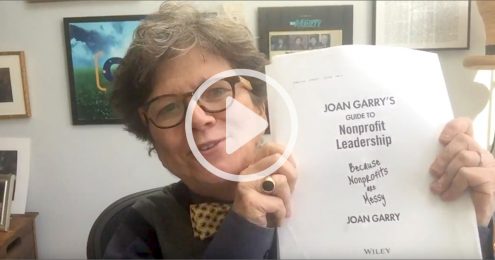“Lunch at Disney Studios with Mickey Mouse re: Ear Size.” The Daily Grill. $73.57.”
You know what nobody actually reads? Expense reports. Or so I thought when I worked at Showtime.
So I expensed the line above. And got reimbursed. No problem. Hypothesis proven.
(Note: the lunch was legitimate. Only the description wasn’t. Nothing fraudulent going on here.)
You know what else nobody reads? Board reports.
I recently got an email from a reader, asking how to write a board report that her board would actually want to read. She needed a board report template. She wrote:
“I was wondering if you might have an example of a format for a CEO report to the board and recommendations for major topics to report on. Our board wants a streamlined, informative snapshot report. The previous report was built on what each board member wanted to hear about and it ended up 6 pages and too lengthy for anyone to want to read.”
Talk about a self-fulfilling prophecy. Of course nobody wanted to read it. And I bet this CEO didn’t want to write it either. After all, if you don’t think someone will read ‘em, you won’t invest much in writing ‘em.
What we have ourselves here is a good ol’ fashioned Catch-22. Here’s the right way to write a board report that will actually get read. And remembered!
Before we begin, I have a board report template you can download…
WHAT IS A BOARD REPORT REALLY FOR?
There’s quite a bit of confusion out there about why you even need to do this. It almost seems like busy work. But done right, it’s actually very important.
The point of a good board report is…
- To communicate, in advance, information that brings board members up to speed on what’s gone on since the last board meeting, leading to much more engagement and interaction at the next board meeting.
- To give board members a sense of pride and enthusiasm about the work.
- To offer one last reminder about what board members committed to do at the last meeting (in case they have forgotten, procrastinated. or both.)
- To spark questions / raise issues that the board member can then ask or address in the board meeting.
- To ignite enthusiasm in your most important ambassadors; to give a board member key stories and “material” for marketing the organization to friends and prospects.
THE ONE AND ONLY THING THAT GETS READ
I was a nonprofit board member and our board book went on for days. The reports were so long that I couldn’t decipher what was most important. The lede was often buried.
So I always went straight for the E.D. report. Done well, it’s like a first rate executive summary – and should in fact tee up the most important parts of the board book.
Write your E.D. report like it’s the only thing anybody will actually read.
A FIRST RATE EXECUTIVE DIRECTOR BOARD REPORT TEMPLATE
You can download this template to share with your staff leader or your board.
You’re the CEO or Executive Director. I’m the board member. Here’s a board report template for what I want (and need) to see.
The Opening
Bring the work to life for me as a board member. Let me walk in your shoes.
“I knew it had been a good quarter when I sat in this meeting with X, Y and Z. And after we made our case, Z turned to X and had a) a change of heart b) a new decision in your favor c) a “yes” to a big ask or d) some kind of evidence that the tide of your work is turning.”
The Most Important Items to Review
Like any good executive summary, tell me what I should look out for in the other reports.
“As you read Emily’s report, take note of page 3 where she talks about her department retreat and the core strategic takeaways from that.”
The Context
Give me some context for our organization’s work. I joined the board because I care about the sector. (If not, you might want to read up on how to fire a toxic board member.)
If you attended a conference, don’t just tell me you did. Tell me something you learned about the sector. I want to be wiser and smarter about what we’re doing. As a board member, I should be.
The Question
Remember: I am not just the person who should be raising money and isn’t. (And here’s how to convince board members to raise money.)
I have a brain, I have skills and expertise and opinions. Put me to work. Get me thinking about that question in advance of the meeting.
Then be sure there is space on the agenda for a discussion of that issue. Don’t ask me to consider a question or an issue and then forget to discuss it at the meeting. That’s rather counterproductive.
The Appreciation
Appreciate our efforts. Thank us in advance for donating the evening or the weekend. It’s not just your staff that’s been so busy. Highlight the work of some of us who have also “been busy” on behalf of the organization since the last meeting.
You want to create a sense of teamwork between the board and the staff.
HOW TO DESTROY YOUR BOARD REPORT
Even if you follow the template, you can still blow it. Here are two things you must promise me you will NOT do!
- Don’t give the board members enough time to read the board book. <sarcasm>It’s not rude at all to send it to me with a few days left on the clock.</end-sarcasm>Frankly, when you sent it at the last minute, you’re sending the message that it’s not very important. So don’t expect I’ll actually read it.
- Use the word “busy!” Look, we get it. But I sure hope you were busy. You don’t have to justify that you have a lot to do. Certainly not to me.Don’t TELL me you’re busy. Tell me what you are doing and why it matters. One time I went through my own staff’s board reports. Guess what? Nearly everyone led with something like, “My staff has been very busy since our last board meeting.”So, before you send out the board book, have somebody go through and remove any sentence that has the word “busy” in it.
A BOARD REPORT IS NOT AN ACTIVITY REPORT
The reader who requested this template sent me a copy of her board report. Here are a few things that stood out to me relative to my guidelines above.
- “Fire panel placement completed” — I am deeply asleep
- “There was no turnover in full time staff in 2014” — I am wildly impressed but want to know more. Why? How does that compare with nonprofit averages?
- “Strategic Plan – in process” — NO! Don’t leave me hanging like that. Tell me more. Can I please hear about the issues are that you are grappling with? Just one maybe?
To my reader: you are clearly doing very important work and have made real strides. Next time you write a report, remember this one sentence:
A board report is not an activity report.
It has to be more.
I would love to hear from board member readers (there are so many of you!) Share your thoughts. What makes a great board report? What would incent you to read the entire board book? What have I missed in my guidelines above?
I am learning that my tribe members have so much to teach each other. And me!
Please comment below!
And if you want to download this template to share with your staff leader or with your board, you can do so below:




I send Monday reports every week to my team/board members. We are an all volunteer board and I’m the workhorse of the team and the Prez and Founder – so Monday reports keep everyone in the loop about what is going on. Our board meetings are virtual and every other month. This gives me good fodder for some change. Also, dang I wish we could afford you for much needed strategy work!
Great article. I used to put a lot more effort into those reports. But now that we meet monthly (for good reasons) it’s really hard to get motivated and I never get them out in enough time. (Most recently I gave them 18 hours. Sigh. )
Dang! Me too 🙂 Glad this was helpful.
Dear Jahphotogal – think of them not as a necessary evil but as a means to get your board more engaged. That might help. Don’t give up on them. Just think differently about. And if i am a board member, 18 hours would annoy me and I wouldn’t read it. Just on principle alone 🙂 Good luck and thanks for your candor!
Thanks for the feedback. Yes 18 hours might have been a little passive aggressive, but I was also genuinely struggling with how to present the latest developments in a very complicated saga – I wanted to persuade them to follow my recommendation so needed to present it well. I failed in the latter and partially succeeded in the former.
I’m always encouraging my clients to do their board reports, give plenty of lead time, and query individual board members for feedback. Thanks for your great posts!
In a small non-profit, does the President do a board report or just the other board members?
Dear Ewoolfe –
I’m delighted that you find the posts helpful. That said it sounds like you don’t need them!!! Good work!
Is there a paid executive director? That person should write one and the meeting should open with smart and supportive opening remarks from the board president. Hope that is helpful. Joan
We have gone to a three part board report – heads up, major accomplishments, focuses for next month (or two). Each section has a bullet list of items that range in length from one to four sentences, but they are intentionally kept brief, containing only the most important information. Often Board members will ask further questions if a particular issue or topic is of interest to them. We have found this really helps us stay out of the weeds but also keeps the Board abreast ongoing / emerging issues.
What is a board book?!? :/ Our board meets monthly on the first Wednesday. I am usually scrambling on that day trying to get the closest possible month-end data possible. What are the minimum requirements (time and content) for information to be sent ahead of the meeting?
AlaskAnna.
That sounds really smart. And what I like about this is that it is so INTENTIONAL! So many staff members write at the last minute and what board members get is really actually just a rough draft. I bet your board members appreciate your thought behind this.
Dear WiseFool. You raise a terrific point. Some organizations have monthly board meetings. I’m assuming this is a small organization and your board is a “working” and not a “governing” board (if these things are not true, you do NOT need monthly meetings). In your case, you need to do something pretty expeditious. I guess I would try to come up with a dashboard template you can use every month about key important data (inc fundraising and financials). I would write a 1-2 page E.D. report and maybe a page from the program person and a page from the development person. And a separate 1-2 pager that reminds the board members of the commitments they made last month. And I’d get that out 72 hours ahead. But riddle me this WiseFool: wny do you need to meet monthly? Board meets use up valuable bandwidth for small staffed organizations. Just food for thought.
Hello! Is there a template report included in this post? Thank you!
Same question – is there a template?
May we see a template or outline please. I love your website by the way. Thank you so much.
My ED report runs 4 to 5 pages each board meeting (about every other month). It includes context and details on all of the major areas of activity the organization is involved with. Some care about some areas, some care about others. Most of it is in bullet-point format for each reading. Color is used to draw attention to items I encourage the bod to discuss or take particular note of.
As a 1-person organization there are no add’l staff reports; financials are reported separately. Most board members read it and come with questions. While it takes 2 to 3 hours to craft each time it can be frustrating for those who opt not to read it. In fact today my board President chastised me for not being ‘transparent’ enough with the board on a particular issue. Yup, the one that had a quarter page in the last report. Can’t force people to read.
Aside from the day to day governance and oversight and providing info the board needs, I find it important to do for the organization to have a record for the archives of accomplishments, challenges, etc.
Joan- do you recommend a board dashboard for programmatic activities? If so, can you say more about that?
Thank you for perhaps the most level headed thing I have read today. Has anyone ever wondered how to fill out forms online? I have, and found a simple service. I am sure at least once in your life you had to fill out a form. I use a simple service
http://goo.gl/GblVy6for forms filling. It definitely makes my life easier!
Thank you so much – your comment did make laugh. I wondered what ELSE you read today :). If you were reading the news for ex, clearly almost ANYTHING would seem level headed. anyway, glad it was helpful
Thank you Joan for an easy, thoughtful and to the point recommendation on Board reports. It’s an area I’ve struggled with for sure given we only have 3 meetings a year and have an international Board which makes it challenging at times. Love all the comments as well, especially the easy three topic approach shared by AlaskAnna. Much appreciated!!!
Sometimes the comments are more valuable than my blog posts !!!!
… ???
The template is outlined within the article.
I email a weekly update to our board, normally each Friday. (if it not much took place that week I will not send one) It includes meeting notes attached from any committee meetings that took place the past week along with agendas for meetings the following week. I include finance statements too, as a non profit, we are an open book. It becomes their choice to read or not, however it does get frustrating to learn how many just delete without at least reviewing to see what is there. Normally the updates are short and to the point to respect their time. While all may not read what I send, I have found it helps create a better sense of trust and cooperation when everyone knows what is going on.
It did not download
Were you able to submit your email address? If yes, did you get an email back with the link to the template?